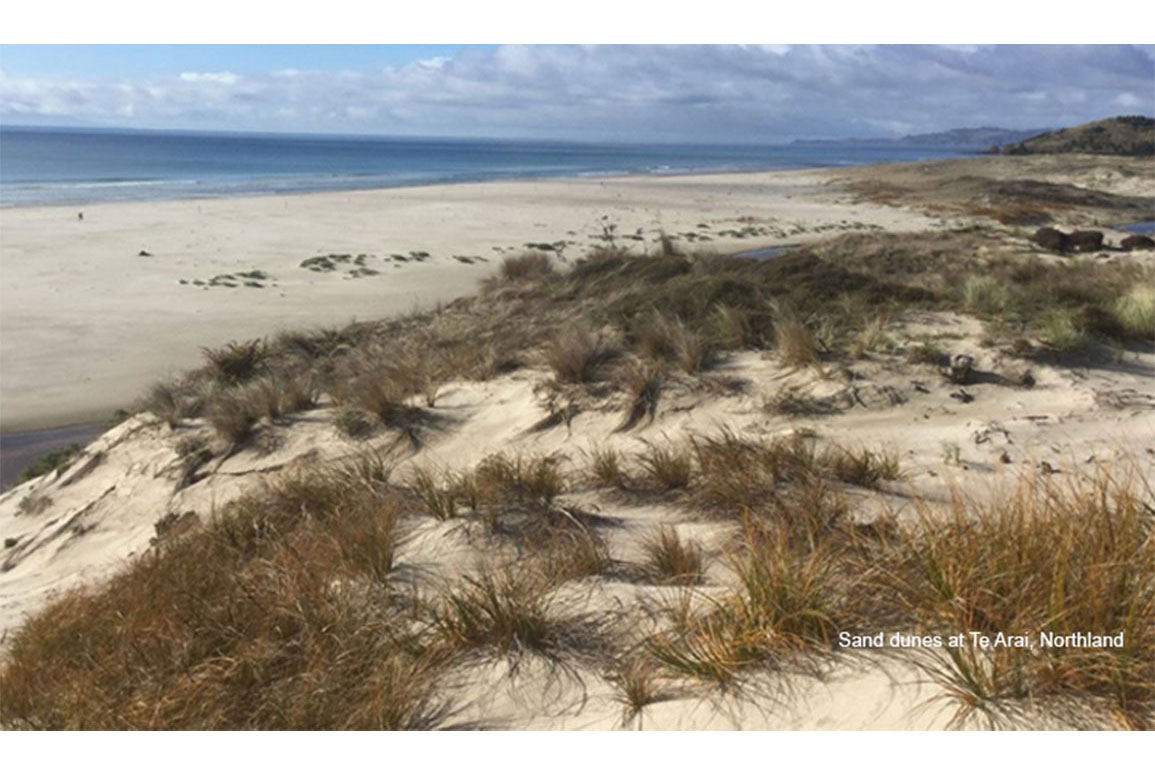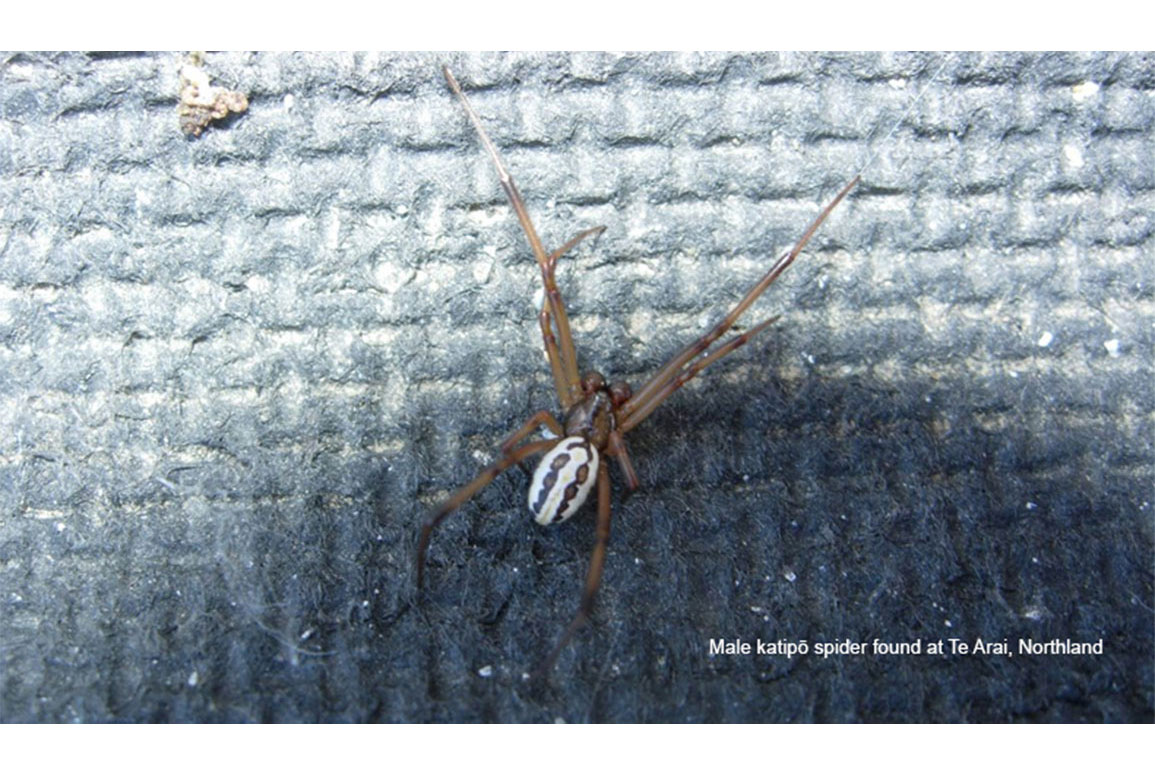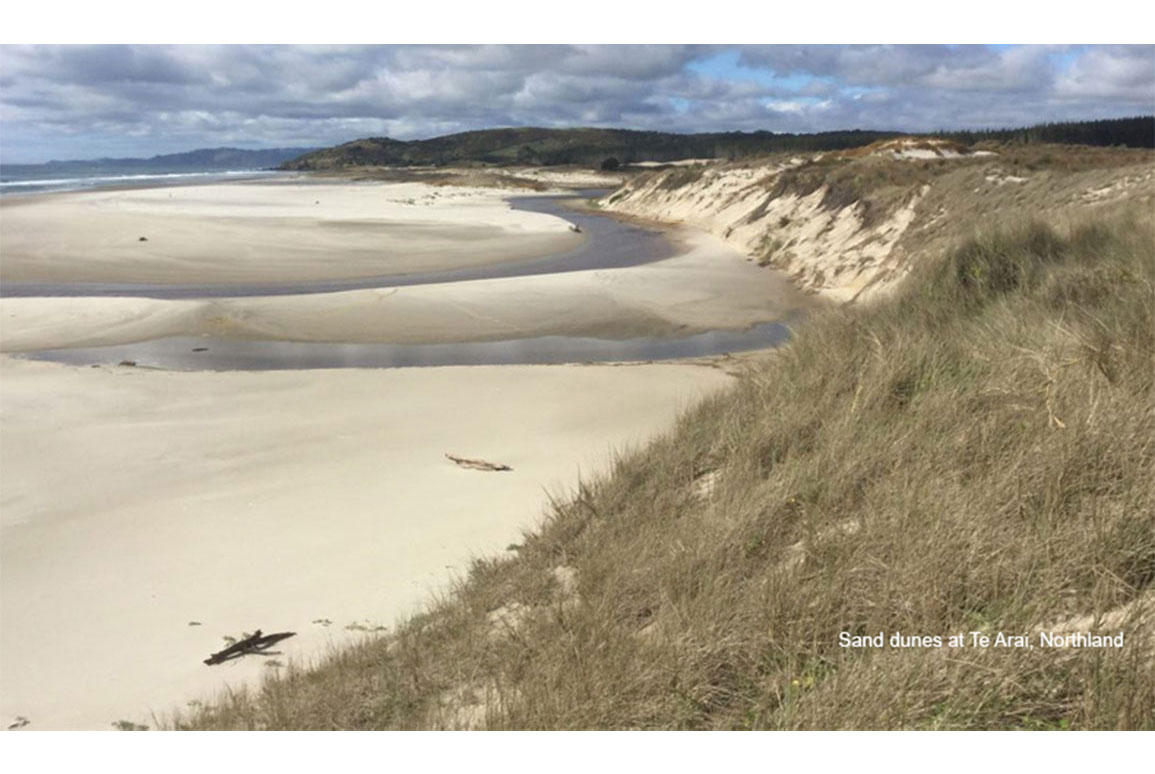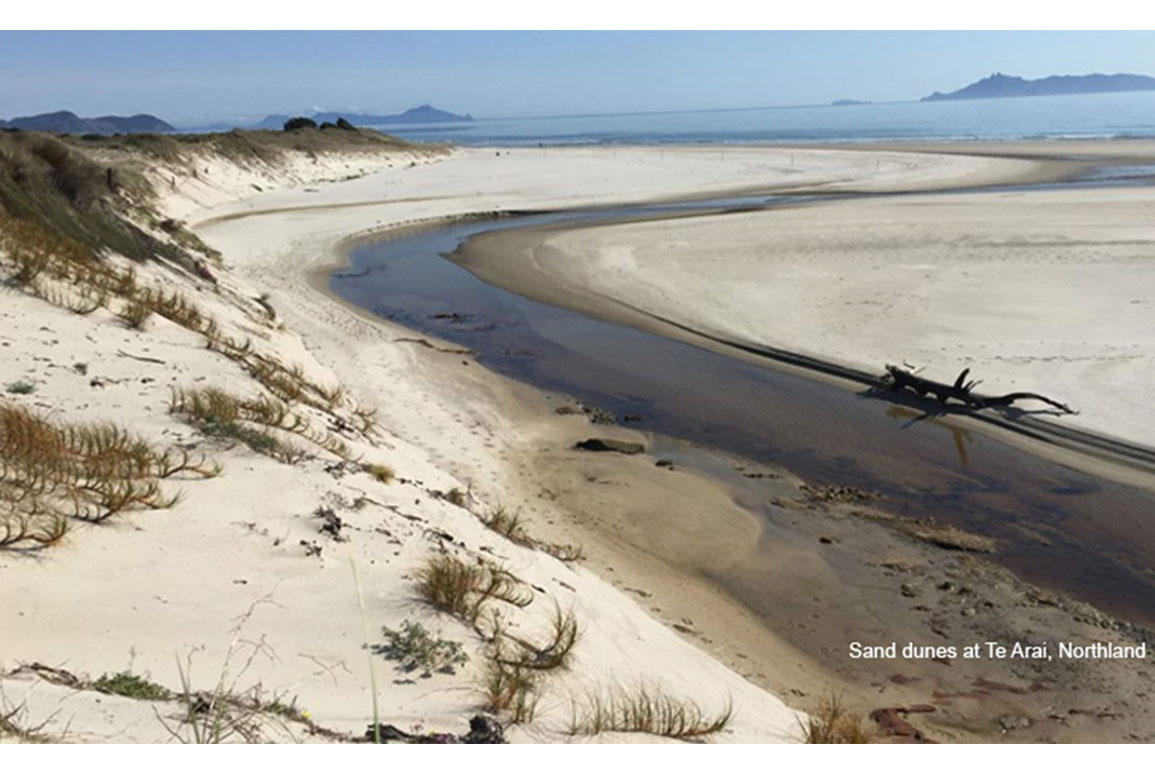What's underfoot on the beach? You'd be surprised
23 January 2020
Nothing says “summer” more than sprinting over burning hot sand dunes towards the cool relief of the sea. But our ecologists say you might want to mind your step as you race towards the water — New Zealand's coastal sand dunes are some of our most threatened environments and are home to several Threatened and At-Risk species.

Active dune systems often retreat or disappear naturally after storms, but the habitat type is under further threat from various coastal land uses and intensification of human activities. In addition, the spread of invasive plants (particularly marram grass, ice plant, tree lupin and gorse), uncontrolled rabbits, vehicles and trampling feet further threaten the sensitive species who reside in the shifting sands.
Dune-nesting shorebirds, such as banded dotterels and New Zealand dotterels, have borne the brunt of much of this habitat loss. For most such species, active pest management and nest protection is critical for their breeding success. However, all is not bad news – the northern subspecies of the New Zealand dotterel is considered still at-risk but recovering; and there are many projects underway around the country dedicated to helping these birds recover (see links below).

A less obvious, yet undeniably unique resident of New Zealand coastal dunes is the katipō spider. New Zealand’s only native venomous spider, katipō is distributed around the country; however, populations are in decline. While most people would recognise the black females with their red stripe (and the all-black variant in the upper North Island), the male is much smaller and quite different in appearance, being white with black stripes and red diamond-shaped markings. Katipō are typically found under driftwood and sheltering in clumps of grass like spinifex and pīnago, however, these resourceful creatures are also known to utilise discarded drink cans and flotsam left on the foredune. Rest assured that no human deaths have been recorded since 1901 as a result of katipō bites.

And while wind-blasted sand doesn’t seem the most hospitable place for a plant, many plants in New Zealand are well adapted for the harsh conditions. The dominant plants on dunes are pīnago and spinifex, and several threatened plants also colonise dunes, including the nationally endangered mingimingi (Muehlenbeckia astonii), nationally vulnerable Holloway’s crystalwort and New Zealand iris, and the declining shore spurge, sand tussock, sand daphne, to name a few.
So next time you head to the beach, tread carefully — stick to the tracks, keep your furry friends close and make sure to “leave only footprints and take only photographs”.


